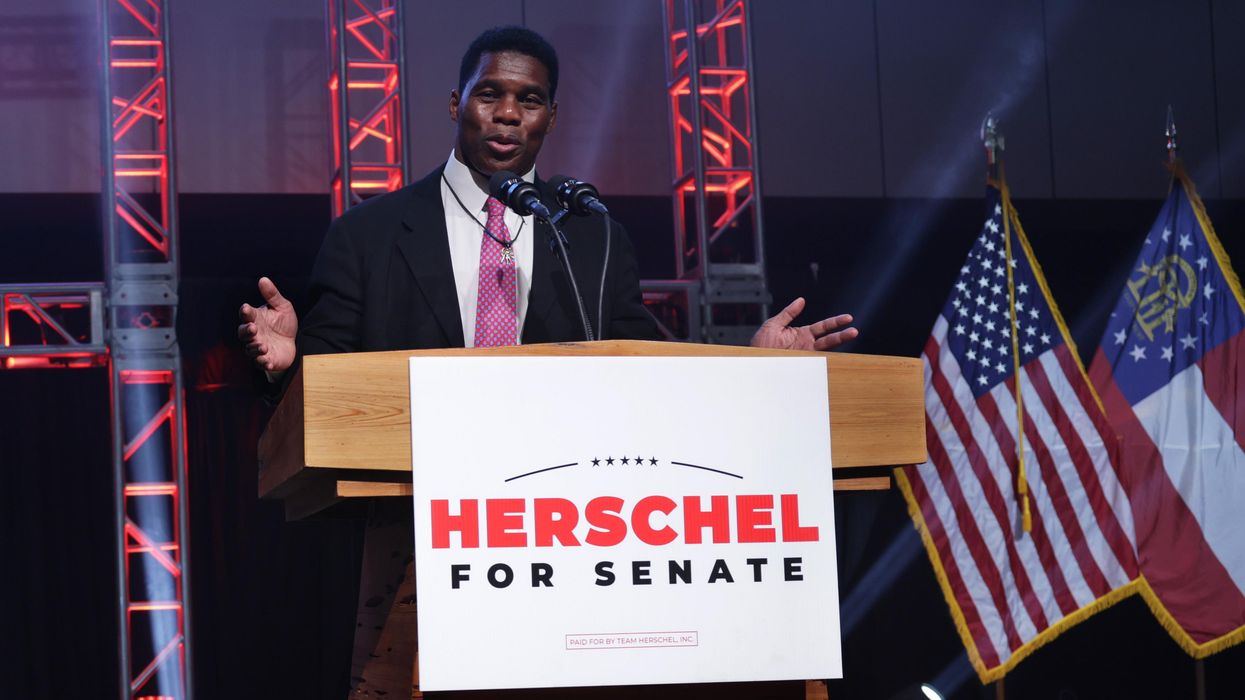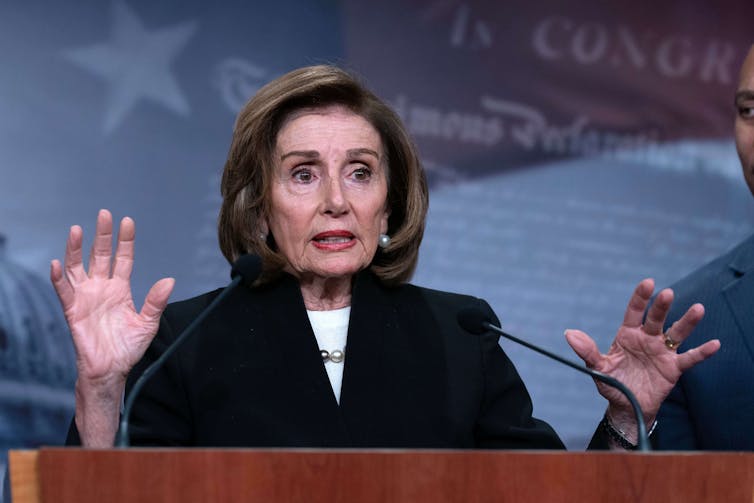Goldstone is the author of the forthcoming "Not White Enough: The Long Shameful Road to Japanese American Internment."
In the wake of Herschel Walker’s stunning loss to Raphael Warnock in Georgia’s Senate runoff, Democratic Party professionals reacted very differently than their Republican counterparts, and those disparities in many ways epitomize the current state of electoral politics in America.
Democratic strategists, although exultant, recognized full well that Warnock’s victory was due in good part, perhaps primarily, to the quality of his opponent. While many on the left were proclaiming Georgia a purple state, the pros knew better. Georgia is still red as evidenced by Republicans’ clean sweep of the other statewide offices, with none of those races being close. Still, that Democrats had any chance at all was the result of a ferocious, years-long campaign to register and educate voters, many but not all Black, spearheaded by Stacey Abrams (who was not a beneficiary of her own efforts). In addition, Democrats made certain that their message was not so extreme as to alienate moderate conservatives in the cities and the suburbs. They even made modest inroads in rural areas, with Warnock specifically mentioning his work for farmers in his victory speech.
As James Carville said the night of the runoff, winning is about forming coalitions. Given the diffuse nature of the Democratic Party, that is their challenge. Democrats are the amoeba, an organism that has an outer boundary but no fixed shape. The party’s members range from the way-left Bernie Sanders and AOC to the almost-right Joe Manchin and now-independent Kyrsten Sinema, who remains closer to Democrats than Republicans. Getting them to agree on most policy initiatives is bruising, filled with invective, recriminations and accusations of disloyalty to basic party principles. To create effective coalitions, then, Democratic leaders must appreciate the need for the party to have some form, some outer boundary, within which compromise can be successfully fashioned. But that boundary cannot be so fixed, so rigid, that it forces one side or the other to defect, as Sinema’s decision to abandon the party label so aptly demonstrates.
Republicans have a different and likely more intractable problem. Their professionals knew exactly why they lost — an abysmal candidate forced on the party by the now-toxic Donald Trump. We must move on, many said. But that will not be easy. Walker was the candidate not because he was chosen in a back room by Steve Bannon and Tucker Carlson, but because he won the primary ... by a lot. Other disastrous Republican nominees, such as Dr. Oz, Blake Masters, Tudor Dixon, Kari Lake and dozens more, were chosen the same way. Had their opponents prevailed in the spring and summer, November would have looked far different.
But Republicans have been sliced in half. Like the earthworm, the half with the head will regenerate a tail and survive, but the half without the head will die. The question for their party is which side has the head. (A flatworm will fully regenerate if cut in half, which, if the metaphor holds, might result in a third party. That outcome would hardly be a boon to Republicans in either camp.)
If the head is on the Donald Trump side, party pros know that Republican primary voters will continue to choose candidates who flame out in general elections because the electorate in all but deep red constituencies have made it clear that Trump’s bombast is no longer enchanting. If, on the other hand, what in the current environment are considered mainstream Republicans — formerly the extreme right — try to take control of the nominating process, the Trump half will either rebel or stay home.
As we begin the 2024 election cycle, these distinctions may prove crucial. For all the vitriol directed by progressive Democrats at Sinema and Manchin, the party desperately needs them both to be re-elected if it is to have any chance of maintaining control of the Senate. Because Democrats did not cut themselves in half, Joe Manchin can return to West Virginia and tell voters not only that he is his own man but that he can wield far more power as an independent Democrat than can any Republican. Kyrsten Sinema can similarly flaunt her bona fides as an “independent” thinker who puts the needs of Arizona before blind party loyalty. (She may face a challenge from the left but only a centrist can win in Arizona.) Other Democrats under threat, such as Sherrod Brown in Ohio and Jon Tester in Montana, can make similar arguments, thus giving them a decent chance of re-election in Republican states.
The amoeba advantage goes far beyond the Senate. Republicans won 18 House seats in districts carried by Joe Biden compared to only five by Democrats who were victorious in Trump districts. If party leaders take the need to build coalitions seriously, they can easily reverse a sufficient number of those losses to win back the House in 2024.
While the Democrats’ task is arduous and painstaking to be sure, Republican leaders are faced with a far more daunting backdrop. The only way they can overcome what seems a fatal split in their party is to try to stitch the earthworm back together, to somehow find a way to nominate candidates who can win general elections without inciting the fury of Trump worshippers who would gleefully burn down the “RINO” house if Trump told them to.
Presently, the party hopes that it can pivot to Trumpism without Trump, in the person of, say, a Ron DeSantis. But while Florida’s governor might currently be receiving both breathless accolades and strong poll numbers, time will only tell if he is a genuine heir to the golden throne or merely a Trump du jour.
In 2016, Wisconsin's Scott Walker was also flying high as a young, hard-nosed conservative governor who had been resoundingly successful in a swing state. Walker was widely touted as the future of the party — until he was forced to perform on a national stage. He did not fare badly, certainly no worse than some of the dozen-plus other candidates, but nor did he send sparks through the Republican electorate. His presidential campaign ended up lasting two months. DeSantis might prove more effective and have more staying power, but those who are praying for a neo-Trump candidate need be aware that the actual Trump will likely be there to insult, belittle, and mock any would-be successor.
With what promises to be a brutal election season ready to begin, there are lessons to be absorbed by both parties. For Democrats, it is to embrace their amoeba-esque flexibility, to recognize they cannot win without it; for Republicans, it is to make sure the worm’s head is on their non-Trump half and then to put all their resources into regenerating the half they allowed Trump to cut off.





















